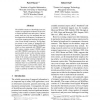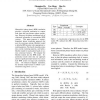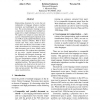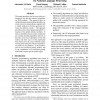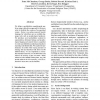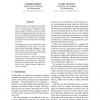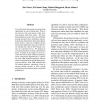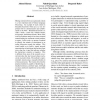EMNLP
2010
13 years 9 months ago
2010
The reliable extraction of knowledge from text requires an appropriate treatment of the time at which reported events take place. Unfortunately, there are very few annotated data ...
EMNLP
2010
13 years 9 months ago
2010
Hierarchical phrase-based (HPB) translation provides a powerful mechanism to capture both short and long distance phrase reorderings. However, the phrase reorderings lack of conte...
EMNLP
2010
13 years 9 months ago
2010
Representing documents by vectors that are independent of language enhances machine translation and multilingual text categorization. We use discriminative training to create a pr...
EMNLP
2010
13 years 9 months ago
2010
This paper introduces dual decomposition as a framework for deriving inference algorithms for NLP problems. The approach relies on standard dynamic-programming algorithms as oracl...
EMNLP
2010
13 years 9 months ago
2010
Graph-based methods have gained attention in many areas of Natural Language Processing (NLP) including Word Sense Disambiguation (WSD), text summarization, keyword extraction and ...
EMNLP
2010
13 years 9 months ago
2010
We define a probabilistic morphological analyzer using a data-driven approach for Syriac in order to facilitate the creation of an annotated corpus. Syriac is an under-resourced S...
EMNLP
2010
13 years 9 months ago
2010
We employ statistical methods to analyze, generate, and translate rhythmic poetry. We first apply unsupervised learning to reveal word-stress patterns in a corpus of raw poetry. W...
EMNLP
2010
13 years 9 months ago
2010
Unknown words are a hindrance to the performance of hand-crafted computational grammars of natural language. However, words with incomplete and incorrect lexical entries pose an e...
EMNLP
2010
13 years 9 months ago
2010
It is well known that parsing accuracies drop significantly on out-of-domain data. What is less known is that some parsers suffer more from domain shifts than others. We show that...
EMNLP
2010
13 years 9 months ago
2010
Mining sentiment from user generated content is a very important task in Natural Language Processing. An example of such content is threaded discussions which act as a very import...
